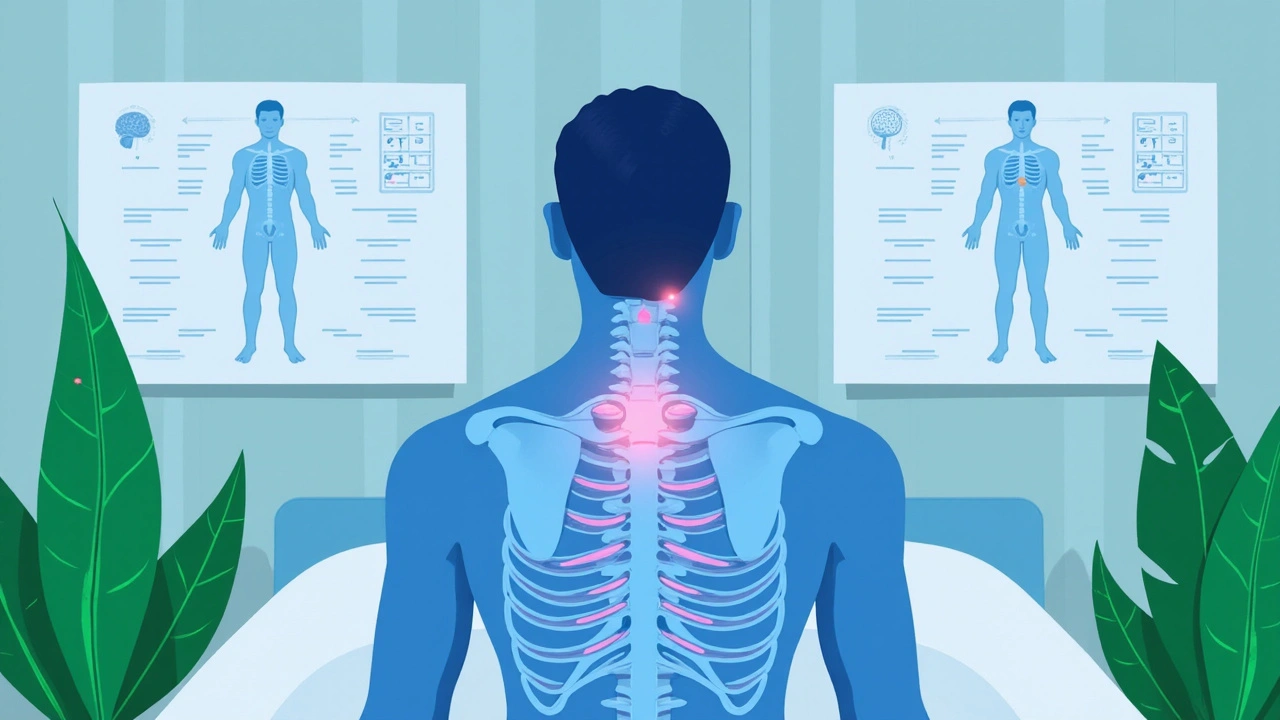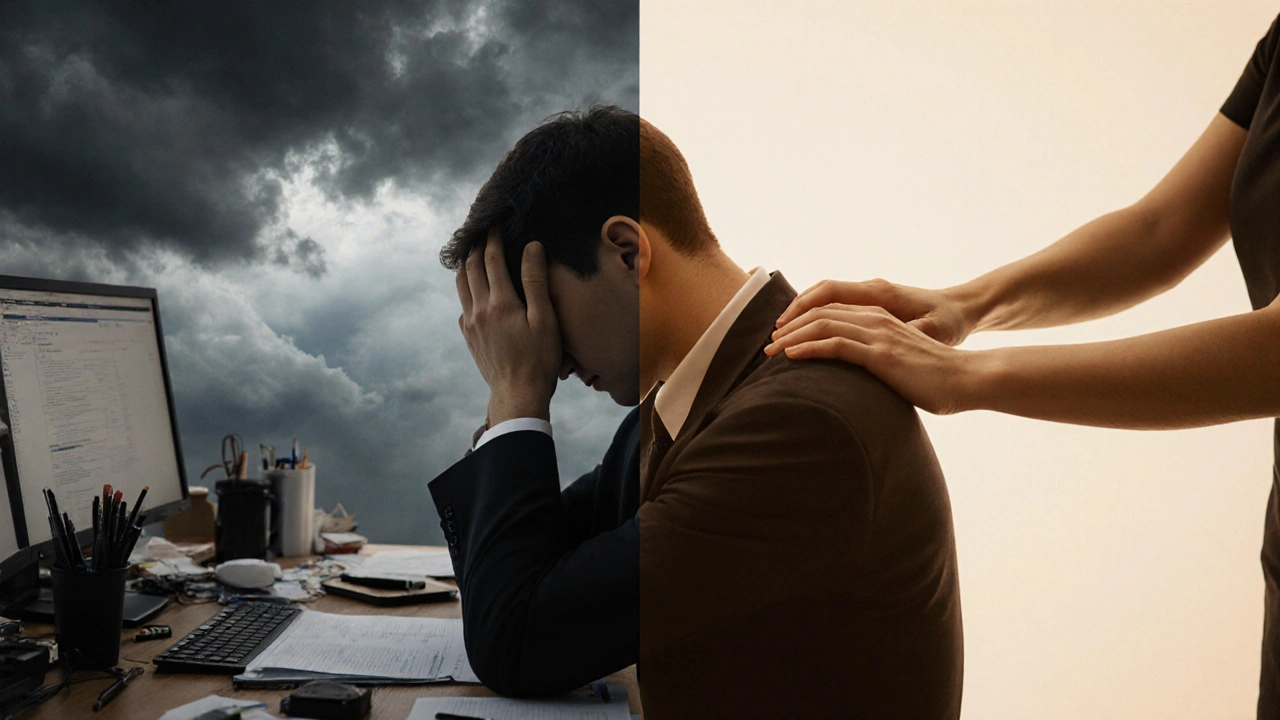Professional Body Massage: Unlock Deep Relaxation and Real Wellness Benefits

Picture your brain after a stressful workweek: tense jaw, hunched shoulders, and a mind that just won't switch off. Ever notice that a simple touch—a pat on the back, a hug—can melt away some of that tension? There's a reason for that: human touch is wired into us as a powerful soother. When you scale up that touch to a professional body massage, you start tapping into benefits that run much deeper than a fleeting sense of calm. We're not talking about just feeling good for sixty minutes, but real, measurable changes in both your body and mind that stick with you long after you're off the massage table.
Science-Backed Benefits of Professional Massage
The days of dismissing massage as just a pampering treat are long gone. Recent research is filled with evidence showing professional massage can make a major impact on physical and mental wellness. A study from Cedars-Sinai Medical Center found that even a single session of Swedish massage brought measurable drops in cortisol—the notorious stress hormone. Meanwhile, oxytocin, nicknamed the "cuddle hormone," climbed, helping to foster feelings of trust and relaxation. Most folks notice right away that their muscles feel looser and their joints less stiff, but let's go deeper.
Repeated massage sessions help blood flow. Improved circulation isn’t just about a slight warmth in your skin; it actually brings more oxygen and nutrients to your muscles, speeding healing and boosting your energy levels. For those dealing with chronic pain (think: fibromyalgia, arthritis, or persistent back pain), studies show regular massage can make a huge difference in function and pain levels. In my own family, Oliver went from popping ibuprofen daily for shoulder stiffness to rarely touching the stuff after starting a massage routine.
It’s not all about the muscles, either. Massage helps the lymphatic system work more efficiently, sweeping away toxins that your body naturally wants to get rid of. Ever had a massage and felt a little thirstier or a bit tired afterward? That’s your body processing and releasing tension (and toxins) that have been building up. Plus, regular sessions can lead to better sleep by helping regulate your nervous system. When stress builds up, massage calms the sympathetic nervous system (‘fight or flight’) and brings the parasympathetic (‘rest and digest’) online, helping your brain and body reset in a way a power nap just can't achieve.
Mental health isn’t left out of the picture, either. Massage therapy is now being used as part of treatment plans for anxiety and depression. Family doctors and therapists sometimes refer patients for massage to help ease symptoms and support emotional stability. One clinical trial published in The Journal of Clinical Psychiatry showed that regular massage therapy reduced symptoms of generalized anxiety and promoted emotional balance. No, it’s not a magic cure, but it’s a tool that actually does work—to the point where insurance plans sometimes cover it.
So, the next time you hear someone call it an "indulgence," think about these very real effects: reduced stress, improved blood flow, pain relief, toxin release, and deeper sleep. There's a reason you walk out of a session not just feeling loose, but a little bit reborn.
Types of Professional Massage and How to Choose
Ever looked at a massage menu and felt lost in a sea of choices? It's honestly a bit much: Swedish, deep tissue, Thai, hot stone, sports, lymphatic drainage, shiatsu. Each style isn’t just marketing fluff—they’re different techniques designed for distinct results. How do you pick one when you’re not an expert (and don’t want to waste money on the wrong type)?
Start with what your body needs. Are you tense from too many hours hunched over the laptop? Swedish massage—a gentle, gliding technique—will help with general relaxation. Need to tackle knots that feel embedded in your back or legs? Deep tissue is the ticket, as it targets the connective tissue and breaks up stubborn adhesions. Athletes and weekend warriors often swear by sports massage, which combines stretches and targeted pressure to help with recovery and injury prevention. After running a 10k, my neighbor always schedules a sports massage the next day. She swears her recovery is twice as fast, and she’s actually able to walk without limping by Monday.
If your body feels weighed down—like after a long flight or during allergy season—a lymphatic drainage massage can be a game changer. This technique uses gentle, rhythmic strokes to help the lymphatic system whisk away waste and reduce bloating. For those who want something a little different, Thai massage is equal parts yoga and massage. You stay clothed, and the therapist helps stretch and twist you into positions that open up tight muscles and joints.
Here’s a practical tip: tell your therapist how you’re feeling before a session. Good professionals are trained to listen and adapt their technique. Don’t be shy if something hurts, or if you want more or less pressure. Your body, your call.
If you’re not sure where to start, book a classic full-body Swedish massage. It’s the gold standard for relaxation and gives you a chance to see how your body responds. After the first session, you’ll know what aches and what feels better, and a good therapist can recommend the next step. Or, if you want to get specific, answer these quick questions:
- Are you mostly stressed? Go for Swedish or aromatherapy massage.
- Is pain or injury an issue? Choose deep tissue or sports massage.
- Feeling swollen or sluggish? Try lymphatic drainage.
- Love the idea of stretching? Book Thai massage.
The beauty of professional body massage is that there’s no "one-size-fits-all." Once you find the right style, massage changes from an occasional luxury to a notch in your self-care belt. Consistency is key. Stick with it, and your body will soon start asking for its next session (trust me, it’s a real thing).

The Real-Life Impact: What to Expect During and After Your Massage
If you’re new to professional body massage, you might have questions about what actually happens. Do you need to undress completely? Is it supposed to hurt? Should you talk during the session? The honest answer is: it depends, but let’s break it down so your first visit is smooth from the minute you walk in.
First up, you’ll usually fill out a short intake form covering your health history, pain areas, and what you want from the session. Your therapist will ask if you’re okay with certain pressure levels or areas to avoid. Once in the room, you usually undress to your comfort level—most people go down to their underwear, but you can leave more on if it helps you relax. You’ll be covered with a sheet except for the limb currently being massaged, so there’s zero risk of accidental embarrassment.
Some people worry massage will hurt, especially if you choose deep tissue. The key? Speak up. There’s a difference between "hurts so good" and "someone’s digging into my spine". The therapist will adjust intensity to suit you. During the massage, some folks drift off or even snore—they call it massage nap, and it’s the ultimate compliment to your therapist! Others prefer to chat, or ask questions about what’s being worked on, and that’s fine, too.
After your session, you’ll probably feel like jelly. The immediate impact is heaviness in your muscles (they’ve just been worked) but also a weirdly calm or even euphoric feeling. This comes from the drop in stress hormones and boost in dopamine and serotonin, your body's happy chemicals. Sometimes you might notice little sore spots, especially after a deep tissue session, but this usually fades quickly. Drinking water afterward isn’t just a cliché—your body really does flush out metabolic waste better with a little hydration. I always keep a thermos in my bag for just that reason.
It’s normal to feel extra sleepy the night after a massage—your body is in deep recovery mode. Sometimes people report vivid dreams or a sharper focus at work in the days that follow. Interestingly, after a series of regular sessions, you might start to notice that recurring headaches, tightness, or even anxiety don’t pop up as often. Massage gently teaches your brain and body what relaxed should feel like, creating a kind of positive muscle memory.
What if you want results to last? Here’s a tip: try to book massages on a regular schedule. The sweet spot for most people is once a month, but some folks with ongoing pain or high stress go every 2-3 weeks. Others use it as part of a rehabilitation program after injury or surgery, working alongside their doctor or physical therapist. Your body will usually tell you what it needs—pay attention after the first few sessions, and you’ll find your rhythm.
Tips for Getting the Most Out of Your Body Massage Experience
Once you see how a professional massage works wonders, you’ll want to make the most of every session. Start by making it a priority, not an afterthought—this is serious self-maintenance, like eating healthy or getting enough sleep. Schedule your appointment at a time when you can actually relax afterward. Friday evenings or weekend mornings work for lots of people, giving you space to let the benefits soak in instead of rushing into work or errands.
Before your session, avoid heavy meals and intense workouts—your body should be in a relaxed state. Arrive a few minutes early so you’re not flustered. If there’s soothing music or aromatherapy on offer, take it in. Little touches, like a warm towel on your neck or calming lavender scent, can make a world of difference.
During the massage, focus on your breath. It helps send signals to your nervous system to unwind. No need for fancy meditation—just a slow inhale and exhale does the trick. If your mind starts racing or you feel antsy, scan through your body and notice how each part feels under the therapist’s hands. This is your “now” moment, which is surprisingly rare in busy lives.
Give honest feedback, both during and after. Maybe you want more attention on your lower back, or you prefer a firmer touch. A good therapist tweaks everything to your needs. Afterward, drink water and enjoy the stillness for a minute before grabbing your phone or running out to face the day. You might notice you walk a bit straighter or your head feels lighter. That’s your body thanking you.
To keep the benefits going between sessions, try some simple self-care at home. Stretching, using a foam roller, gentle yoga, or even a basic self-massage of your neck or feet can extend that relaxed feeling. Some people find Epsom salt baths or a heating pad add another layer of comfort. Listen to your body—if a certain stretch feels great, keep it up; if you feel pain, don’t push.
Don’t be shy about trying different therapists or styles until you find a fit that clicks. This is a partnership: the more in tune you are with the professional you work with, the better your outcomes will be.
Massage isn’t just a treat you give yourself on your birthday. It’s real health care, wrapped in the comfort of warm hands, soft music, and an hour that belongs just to you. The transformative power is not just hype—it’s science, it’s self-connection, and it’s a reset button for your entire system. If you think of it as just a luxury, you’re missing out on one of the most transformative wellness tools available. Trust your body. Book the session.



